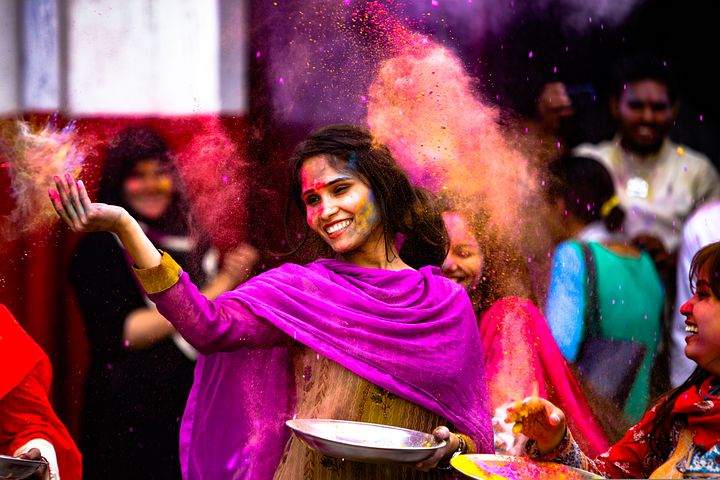Visitors have accessed this post 157 times.
Holi is one of the most popular and vibrant festivals celebrated in India and other parts of the world. Also known as the “Festival of Colors,” it is a time to celebrate spring, love, and new beginnings. The festival usually falls in late February or early March and is celebrated over two days.
Here is a closer look at the traditions and significance of Holi:
-
The Legend of Holika and Prahlad: The story behind Holi dates back to Hindu mythology. According to legend, a demon king named Hiranyakashipu was granted a boon that made him virtually indestructible. However, his son Prahlad was a devout follower of Lord Vishnu, whom Hiranyakashipu despised. When all attempts to sway Prahlad failed, Hiranyakashipu enlisted the help of his sister, Holika, who was immune to fire. Together, they hatched a plan to burn Prahlad alive. However, when the fire was lit, Holika was burned to ashes, while Prahlad emerged unscathed. The triumph of good over evil is celebrated every year during Holi.
-
The Play of Colors: One of the most iconic aspects of Holi is the play of colors. People gather together to throw colored powder and water at each other, symbolizing the coming together of communities and the breaking down of social barriers. The colors used during Holi are made from natural ingredients like turmeric, flowers, and herbs, and are said to have medicinal properties.
-
Traditional Food and Drinks: Holi is also a time for feasting and celebration. Traditional foods like gujiya (sweet dumplings), mathri (crispy snacks), and thandai (a spiced milk-based drink) are prepared and shared with friends and family.
-
Bonfires and Rituals: On the eve of Holi, bonfires are lit to symbolize the burning of Holika and the triumph of good over evil. People gather around the fire to sing and dance, and offerings are made to the gods.
-
Cultural Significance: Holi is a time for forgiveness, reconciliation, and renewal. It is an opportunity to let go of past grudges and start fresh. The festival also celebrates the arrival of spring, with its abundance of colors and fragrances.
However, it is important to celebrate Holi in a responsible and safe manner. Here are some tips for a safe and enjoyable Holi:
-
Use natural colors: Many commercial Holi colors contain harmful chemicals that can irritate the skin and eyes. Use natural colors made from flowers, herbs, and spices instead.
-
Protect your skin and hair: Apply a generous layer of oil to your skin and hair before playing with colors to prevent them from staining. Wear old clothes that you don’t mind getting dirty.
-
Drink responsibly: Thandai, a traditional Holi drink, is often laced with bhang (a cannabis-infused ingredient). Drink responsibly and avoid driving under the influence.
-
Be respectful: Holi is a time for celebration, but it is also important to be respectful of others. Do not force others to participate in the play of colors if they are not comfortable, and be mindful of others’ personal space and boundaries.
-
Stay hydrated: Playing with colors and dancing can be tiring, so make sure to stay hydrated by drinking plenty of water.
In conclusion, Holi is a vibrant and joyous festival that celebrates spring, love, and new beginnings. From the play of colors to traditional foods and rituals, it is a time for celebration and renewal. However, it is important to celebrate Holi responsibly and with respect for others, to ensure a safe and enjoyable experience for all.
